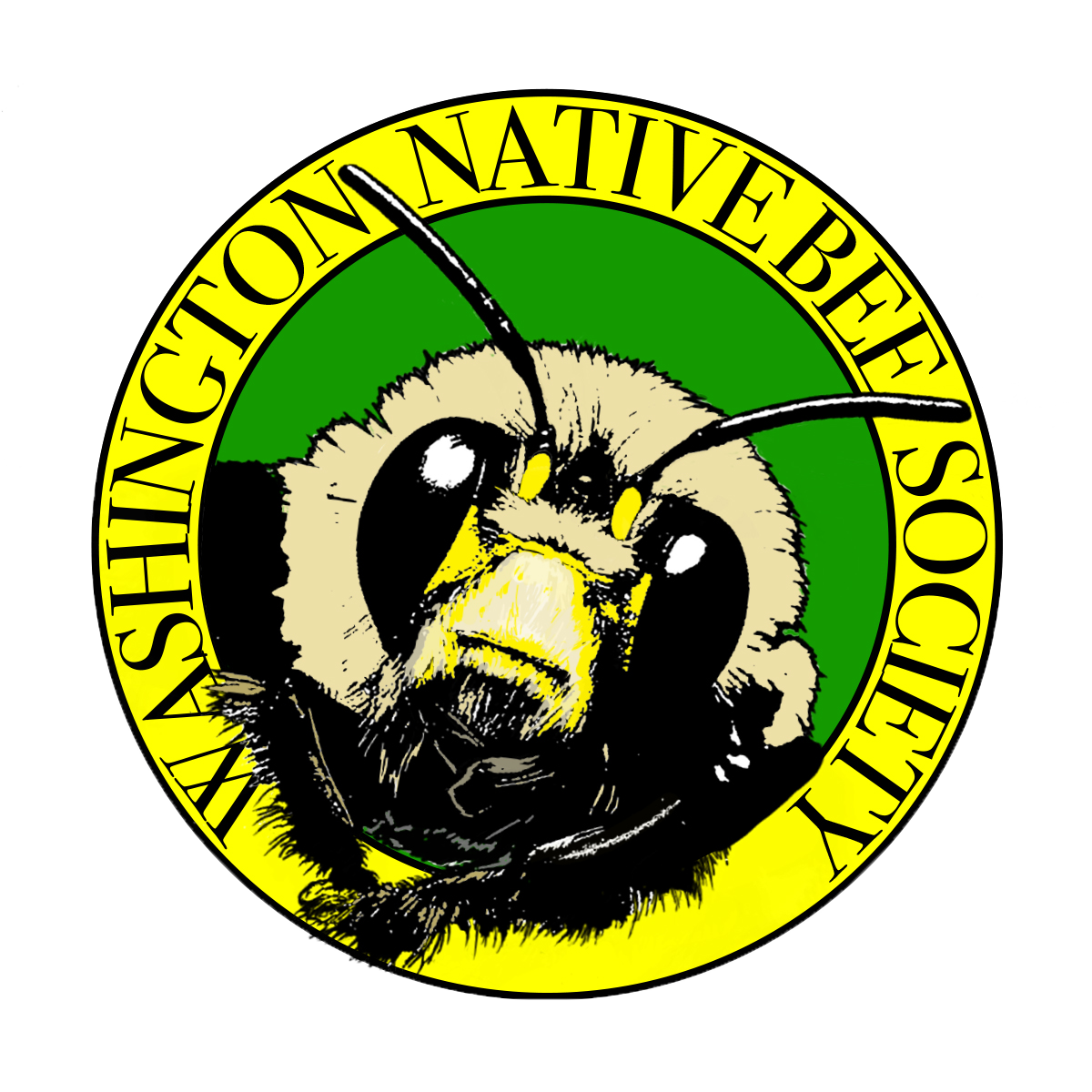Seven Native Bees to Know in Washington State
- Joe Dlugo
- Jan 18, 2022
- 4 min read
Updated: 4 days ago
There's a lot of buzz going around about Washington State's 600+ native bees, but where can you start to learn about this dizzying array of diversity? Here are seven of the most talked-about bees you're likely to encounter.
#1 Alkali Bee - Nomia melanderi

Who would have thought the world's most amazing bee spectacle takes place in our state? In a quiet agricultural valley west of Walla Walla, the earth comes alive every June with millions of these handsome ground-nesting native bees. The bees prefer to nest in salty earth, so alfalfa seed farmers oblige by creating impressive roadside salt beds that can be a wonder to behold. Just be sure to heed the special 20 mph speed limits designed solely to protect the bees! This endearing connection between humans and bees happens in their flying season from mid-June to mid-July in the towns of Touchet, Gardena and Lowden.

#2 Blue Orchard Bee - Osmia lignaria

One of the biggest gardening trends of recent times has been to raise blue orchard bees for pollination of your spring fruit trees. You can buy them from your local nursery, or simply set up a bee hotel in a sunny spot and wait for them to show up. They are relatively easy to raise and are active from mid-March to early June–prime time for pollinating your orchard.

#3 Western Bumble Bee - Bombus occidentalis

If you’ve been around Washington since the 1990’s you might remember this species as one of the most common bumble bees to be found. Nowadays that isn’t the case. With only scattered and scant populations left, mostly in remote mountain areas of the state, they have fallen on hard times due to an introduced pathogen from bumble bees imported for greenhouse agriculture. Listed as “vulnerable” in our state, they are a bee species of great concern and sightings should be reported on iNaturalist or to the Washington Department of Fish and Wildlife’s reporting page. Although many bumble bee species can be difficult to identify, the western bumble bee has characteristic field marks: just look for the combination of large white rump patch with bright yellow at the front of its thorax (scutum).

#4 Western leafcutter bee - Megachile perihirta

Big, fuzzy, bold, and kind of cute, the western leafcutter bee is a common summer pollinator found in gardens throughout the state. The aquamarine-eyed males patrol flower patches with great zeal, showing aggression towards any unwelcome bee guests. The females nest in the ground, often choosing packed earth between rocks and patio pavers. They can be spotted carrying brightly colored loads of pollen on the hair under their abdomens (scopae). These entertaining native bees can be attracted to just about any garden with asters (Symphiotrichum spp.), blanket flower (Gaillardia aristata) or sunflowers (Helianthus spp.).

#4 Fairy Bees - Perdita spp.

Almost unbelievably tiny, these are among the world's smallest bees. A keen-eyed and persistent observer can sight them visiting their favored flowers throughout the summer months. A species' emergence is often timed with the bloom of a specific flower species on which it is completely dependent. This dependence, coupled with little wings that can't carry them long distances, makes them especially prone to the effects of habitat fragmentation. Fairy bees are found throughout the state, but are more common in the east. They are common in some places where ocean spray (Holodiscus discolor), tall buckwheat (Eriogonum elatum), and rubber rabbitbrush (Ericameria nauseosa) are in bloom.

#6 Metallic green sweat bee - Agapostemon virescens

These brilliant, iridescent beauties are commonly observed residents of gardens and urban areas. Their stunning green colors have been known to spark a reconsideration of the world of bees in those who observe them, igniting many a passionate interest in melittology. Beyond their good looks there is no shortage of things to love about them. With a long season stretching from May to November, they are not picky about their flowers, finding dandelions delectable in spring, hyssop in summer, sunflower and asters in the fall. In some gardens, they are even adept cucumber pollinators. As they are ground-nesting bees, they make characteristic miniature volcano-like nest mounds that can sometimes be found in groups. A patient observer may see their little green heads emerge from their holes. Often the last solitary bees flying in the latest days of the growing season, they offer a brilliant send-off before the long bee-less months of winter.

#7 Nomad bees - Nomada spp.

A bee that looks like an ant, and is also a parasite–of other bees! The bee world holds tremendous diversity, and in that we find some species that rely on other bees to raise their young. Much like the infamous cowbird does to its avian cousins, the nomad bee sneaks into the nests of other bees to drop an egg and promptly leave. The unsuspecting owner of the nest will provision the egg, which eventually will hatch and outcompete the intended inhabitants. Among the showiest of bees, they can be found in a variety of remarkable colors. Nomad bees have very little hair, unlike non-parasitic bees that transport pollen between flowers and their nests in their fuzz. With no nests to gather pollen for, there's no need for the equipment to transport it.

